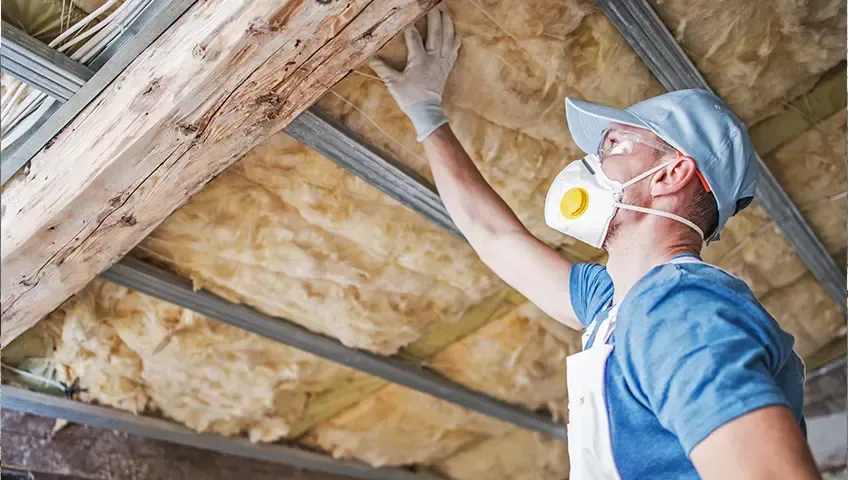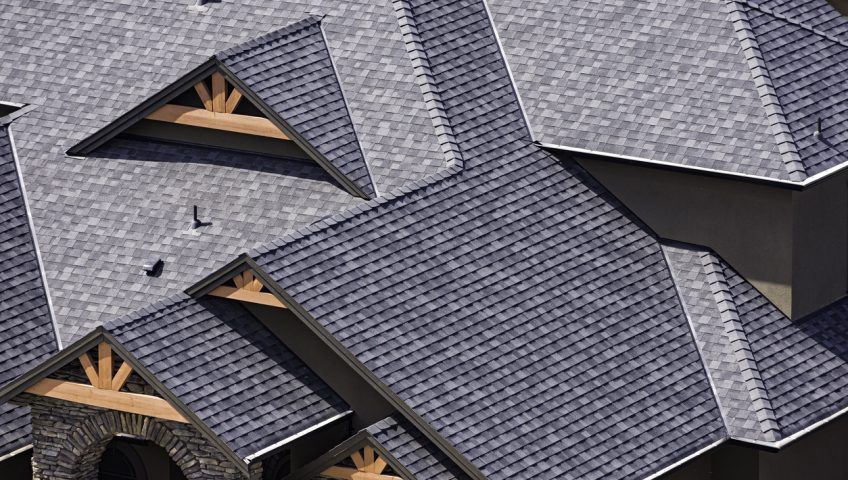February 7, 2025
When it comes to protecting your home from the elements, the roof is your first line of defense. In Peterborough, where weather can range from cold, snowy winters to hot, humid summers, selecting the right roofing material is essential to ensure durability, aesthetic appeal, and energy efficiency. Shingle roofing is one of the most popular choices for homeowners due to its versatility, cost-effectiveness, and ease of installation. At Feeney Roofing, we offer a wide selection of high-quality roofing materials that cater to the diverse needs of local homeowners. Let’s have a look at the top shingle roofing materials for homes in Peterborough, the benefits and drawbacks of each, so you can make an informed decision for your next roofing project. Table of Contents Asphalt Shingles: The Most Popular and Affordable Choice Benefits of Asphalt Shingle Roofing: Drawbacks of Asphalt Shingle Roofing: Architectural Shingles: Enhanced Durability and Aesthetic Appeal Benefits of Architectural Shingle Roofing: Drawbacks of Architectural Shingle Roofing: Wood Shingles: Natural Beauty and Timeless Charm Benefits of Wood Shingle Roofing: Drawbacks of Wood Shingle Roofing: Slate Shingles: Elegant, Durable, and Long-Lasting Benefits of Slate Shingles: Drawbacks of Slate Shingles: Asphalt Shingles: The Most Popular and Affordable Choice Asphalt shingles are the most commonly used roofing material in North America, and they are a top choice for homes in Peterborough due to their affordability, reliability, and wide range of options. Asphalt shingles are designed to withstand the harsh weather conditions that Peterborough experiences, making them a durable choice for homeowners looking for both cost savings and long-term performance. Benefits of Asphalt Shingle Roofing: Cost-Effective: Asphalt shingles are among the most affordable roofing materials available, making them a popular choice for homeowners on a budget. Durability: High-quality asphalt shingles are designed to withstand wind, rain, snow, and UV exposure. They are resistant to cracking, warping, and curling, which helps them maintain their integrity even during extreme weather. Variety of Styles and Colors: Asphalt shingles come in a wide range of colors and textures, so homeowners can choose a style that complements their home’s architecture and enhances curb appeal. Drawbacks of Asphalt Shingle Roofing: Shorter Lifespan: Compared to materials like slate or metal, asphalt shingles have a shorter lifespan, typically lasting 15–30 years. This is much shorter than the durability of alternatives, which may require more frequent replacements. Prone to Weather Damage: Asphalt shingles are vulnerable to extreme weather conditions, such as high winds, heavy rain, and hail. In regions with frequent storms, shingles can curl, crack, or even blow off, reducing their effectiveness. Heat Sensitivity: Asphalt shingles can absorb a significant amount of heat from the sun, leading to higher energy bills in hot climates. This can also cause them to degrade faster over time, as the heat can make them brittle or cause them to lose their protective granules. Architectural Shingles: Enhanced Durability and Aesthetic Appeal Architectural shingles, also known as dimensional shingles, are a premium option that offers a step up from standard asphalt shingles. These shingles are designed with multiple layers of material to provide a richer, more textured appearance that mimics the look of more expensive roofing materials, such as wood or slate. Architectural shingles are a fantastic choice for homeowners in Peterborough who want to enhance the visual appeal of their home while benefiting from added durability. Benefits of Architectural Shingle Roofing: Aesthetic Appeal: Architectural shingles are thicker and more textured than traditional asphalt shingles, giving your home a more upscale and elegant appearance. They can mimic the look of high-end roofing materials, providing the aesthetics of wood or slate without the hefty price tag. Superior Durability: With multiple layers of material, architectural shingles are more durable than standard asphalt shingles. They are designed to withstand high winds and are resistant to cracking, curling, and fading, making them ideal for the variable weather conditions in Peterborough. Longer Lifespan: Architectural shingles have a longer lifespan than traditional asphalt shingles, often lasting 30 years or more with proper maintenance. Drawbacks of Architectural Shingle Roofing: Higher Initial Cost: Architectural shingles are generally more expensive than basic asphalt shingles due to their enhanced durability, thicker layers, and aesthetic appeal. The upfront cost can be a significant factor when compared to standard shingles. Weight: While architectural shingles are heavier than traditional asphalt shingles, this added weight may require additional structural support, especially for older homes. The need for reinforcing the roof could add extra costs. Vulnerability to Extreme Weather: Although architectural shingles are more durable than standard asphalt shingles, they are still vulnerable to extreme weather like high winds, heavy rain, and hail. In areas with frequent severe weather, architectural shingles can still be damaged or blown off. Wood Shingles: Natural Beauty and Timeless Charm For homeowners in Peterborough who are looking for a natural, rustic look, wood shingles are a fantastic option. Made from high-quality cedar, redwood, or pine, wood shingles offer a timeless, classic aesthetic that can add character and charm to any home. While wood shingles require more maintenance than asphalt or architectural shingles, they offer unmatched natural beauty that appeals to those seeking a unique, organic look for their home’s exterior. Benefits of Wood Shingle Roofing: Timeless Aesthetic: Wood shingles provide a natural, warm appearance that cannot be replicated by synthetic materials. They are perfect for homeowners who appreciate the beauty of wood and want their home to reflect that. Energy Efficiency: Wood is a natural insulator, which means that wood shingles can help keep your home cooler in the summer and warmer in the winter, reducing the need for excessive heating and cooling. Environmental Benefits: Wood shingles are a renewable resource, especially when sourced sustainably. For environmentally conscious homeowners, wood shingles can be an eco-friendly roofing option. Drawbacks of Wood Shingle Roofing: Cost: Wood shingles are generally more expensive than asphalt shingles, both in terms of material and installation. In addition, the cost of maintenance over time can add up. Environmental Impact: Although wood is a natural material, the sourcing of wood for shingles can contribute to deforestation if not done sustainably. Additionally, the frequent need for treatments and chemicals (e.g., preservatives, fire retardants) can diminish their environmental benefits. Sensitivity to Weather Conditions: Wood shingles are more susceptible to warping, splitting, or curling in extreme weather conditions, such as high heat or cold. In areas with frequent temperature fluctuations, this can cause the shingles to wear out more quickly. Slate Shingles: Elegant, Durable, and Long-Lasting For homeowners who are looking for the ultimate in luxury and durability, slate shingles are a top-tier option. Slate is a natural stone that has been used for centuries as a roofing material due to its strength, beauty, and long lifespan. While slate shingles are more expensive than other options, they offer unparalleled durability and aesthetic appeal that can significantly enhance the value of a home. Benefits of Slate Shingles: Unmatched Durability: Slate shingles are incredibly durable and can last for over 100 years when properly installed and maintained. They are resistant to cracking, fading, and warping, making them ideal for homes that need a roofing material that can withstand the test of time. Aesthetic Appeal: Slate has a natural, elegant appearance that is unmatched by other roofing materials. Its deep, rich colors and unique texture can elevate the curb appeal of any home, adding sophistication and charm. Fire Resistance: Slate is a naturally fire-resistant material, offering an added layer of protection for homes in areas prone to wildfires or other fire hazards. Drawbacks of Slate Shingles: High Initial Cost: Slate roofing is more expensive than other materials like asphalt or wood. The cost of the material itself, along with labor for installation, makes it a large upfront investment. Heavy Weight: Slate is a dense material, and the weight of a slate roof can be a concern. Some homes may require structural reinforcement to support the added weight, which can increase installation costs. Labor-Intensive Installation: Installing slate shingles requires specialized knowledge and skill, which can lead to higher labor costs. Choosing the Right Shingle Roofing Material for Your Home in Peterborough When choosing the best roofing material for your home in Peterborough, it’s important to consider factors such as durability, aesthetic appeal, energy efficiency, and budget. Feeney Roofing offers a range of top-quality shingle roofing options, including asphalt, architectural, wood, and slate shingles, each with its own unique benefits. Whether you’re looking for an affordable and reliable solution or a luxury option that will stand the test of time, Feeney Roofing has the expertise to help you make the right choice. By comparing and taking the right decision by identifying Shingle Roof Replacement vs. Repairs, you can learn how to choose the best option for your roof’s needs! Contact us today to learn more about our roofing materials and schedule a consultation to ensure your home is protected for years to come!










